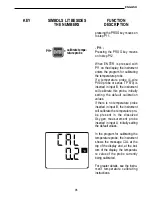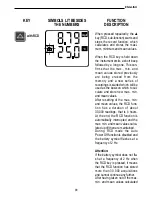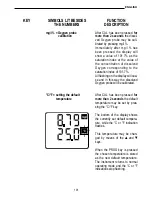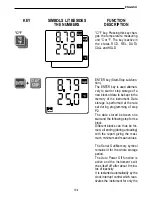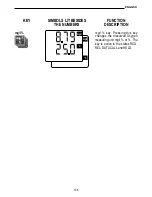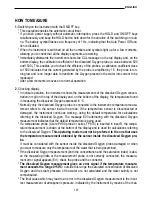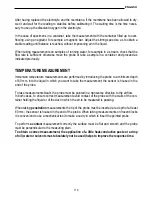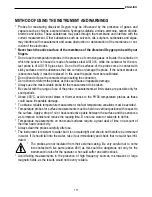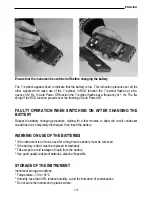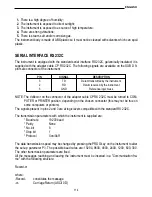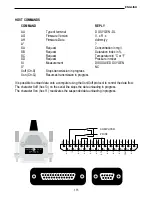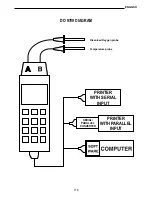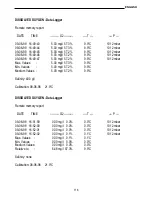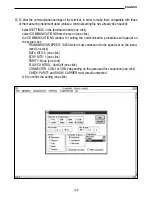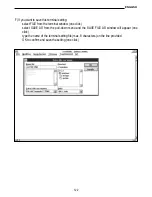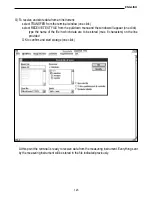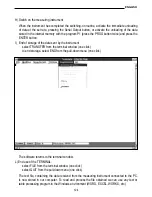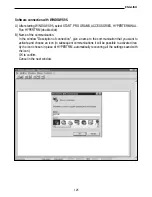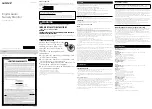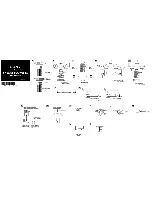
After having replaced the electrolyte and the membrane, if the membrane has been allowed to dry,
wet it and wait for the reading to stabilise before calibrating it. The waiting time is the time neces-
sary to use up the dissolved oxygen in the electrolyte.
In the case of specimens in a container, take the measurement with the container filled up to over-
flowing, using an agitator, for example a magnetic bar. Adjust the stirring speed so as to obtain a
stable reading until balance is reached, without imprisoning air in the liquid.
When taking measurements on samples of running water, for example in a stream, check that the
flow rate is sufficient; otherwise move the probe or take a sample in a container and proceed as
indicated previously.
TEMPERATURE MEASUREMENT
Immersion temperature measurements are performed by introducing the probe to a minimum depth
of 60 mm. into the liquid in which you want to take the measurement; the sensor is housed in the
end of the probe.
To take measurements in air, the probe must be pointed in a transverse direction to the air flow.
In both cases, to ensure correct measurement avoid contact of the probe with the walls of the con-
tainer holding the liquid or of the duct in which the air to be measured is passing.
When taking penetration measurements the tip of the probe must be inserted at a depth of at least
60 mm.; the sensor is housed in the end of the probe. When taking measurements on frozen blocks
it is convenient to use a mechanical tool to make a cavity in which to insert the pointed probe.
To perform a contact measurement correctly the surface must be flat and smooth and the probe
must be perpendicular to the measuring plain.
To obtain a correct measurement, the application of a little heat-conductive paste or a drop
of oil (water or solvents must absolutely not be used) helps to improve the response time.
ENGLISH
110

